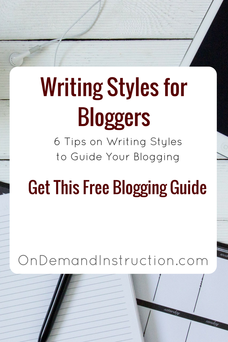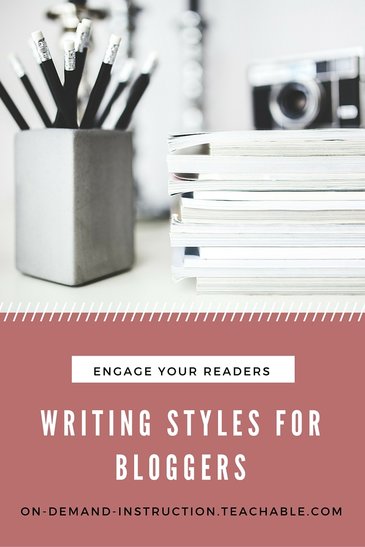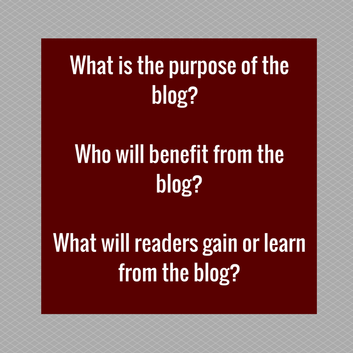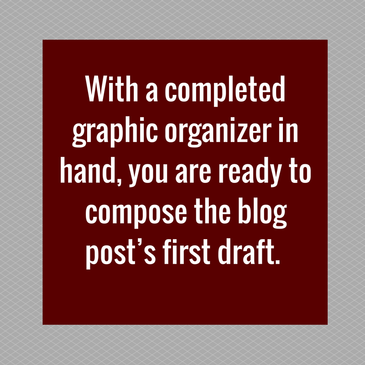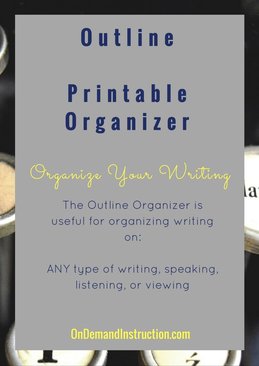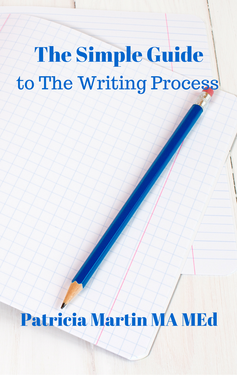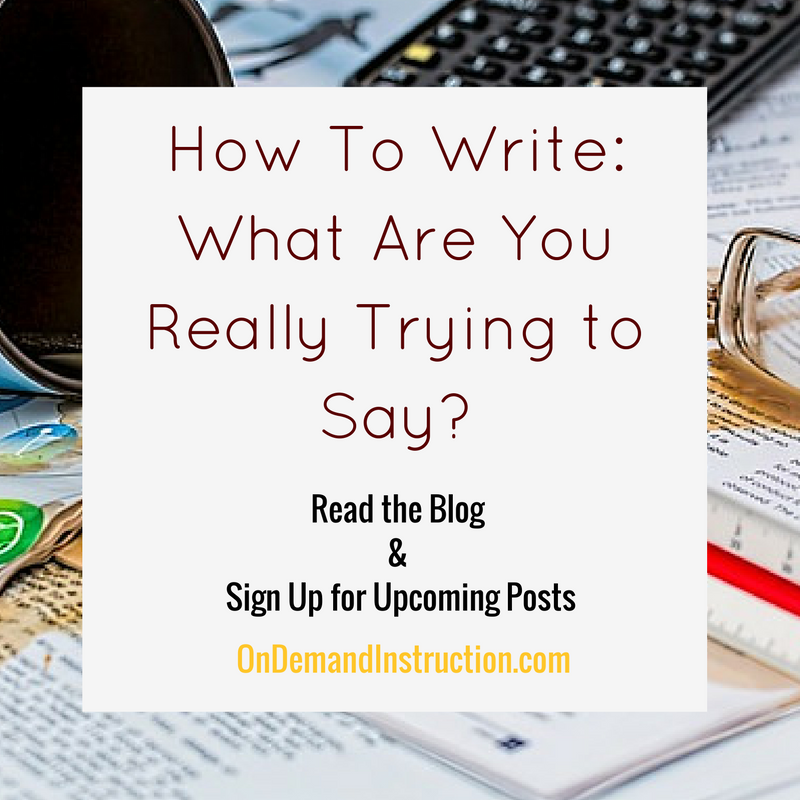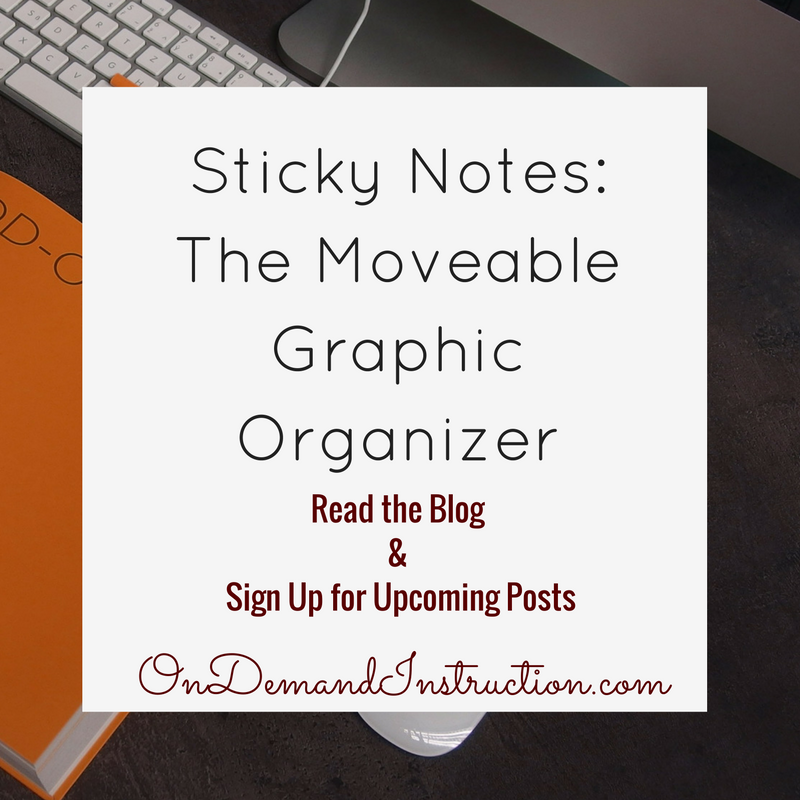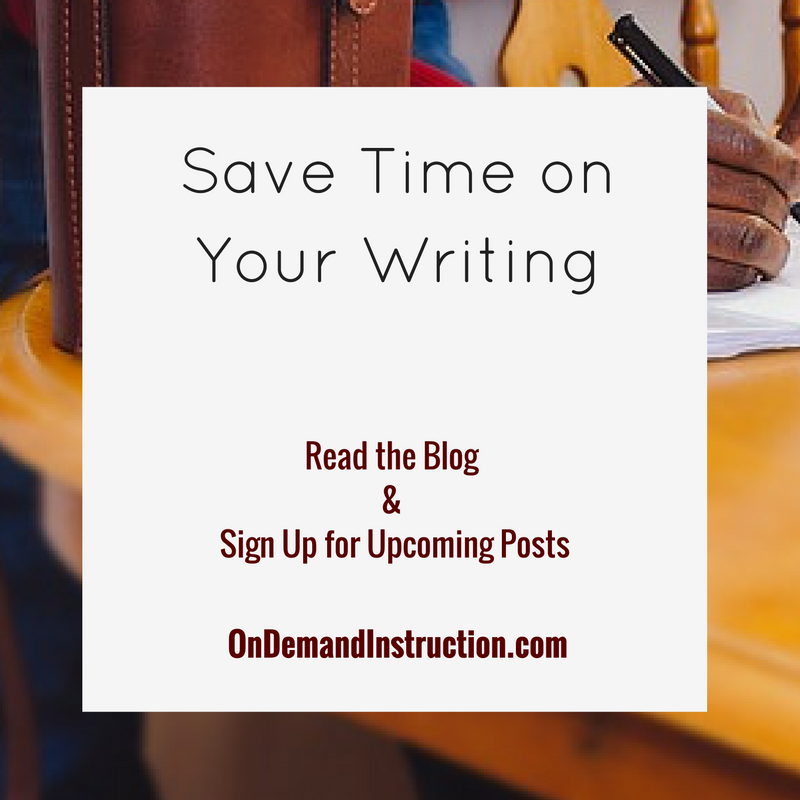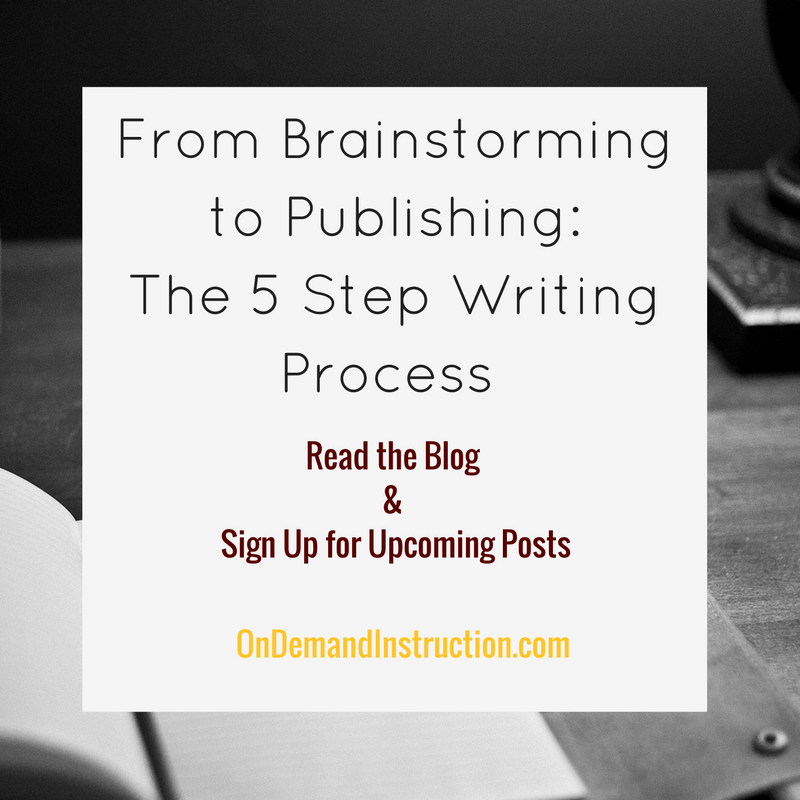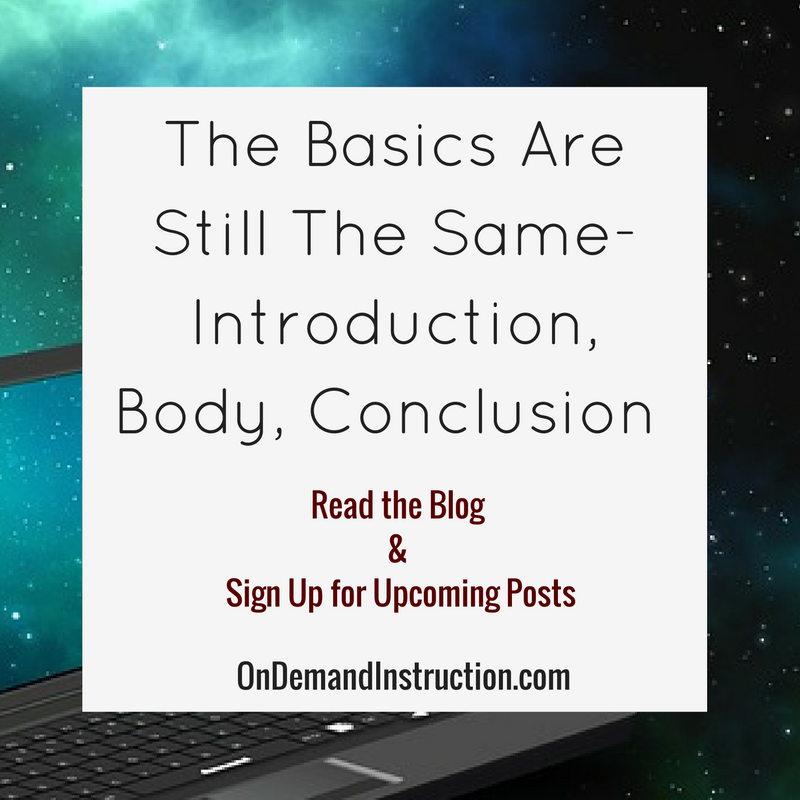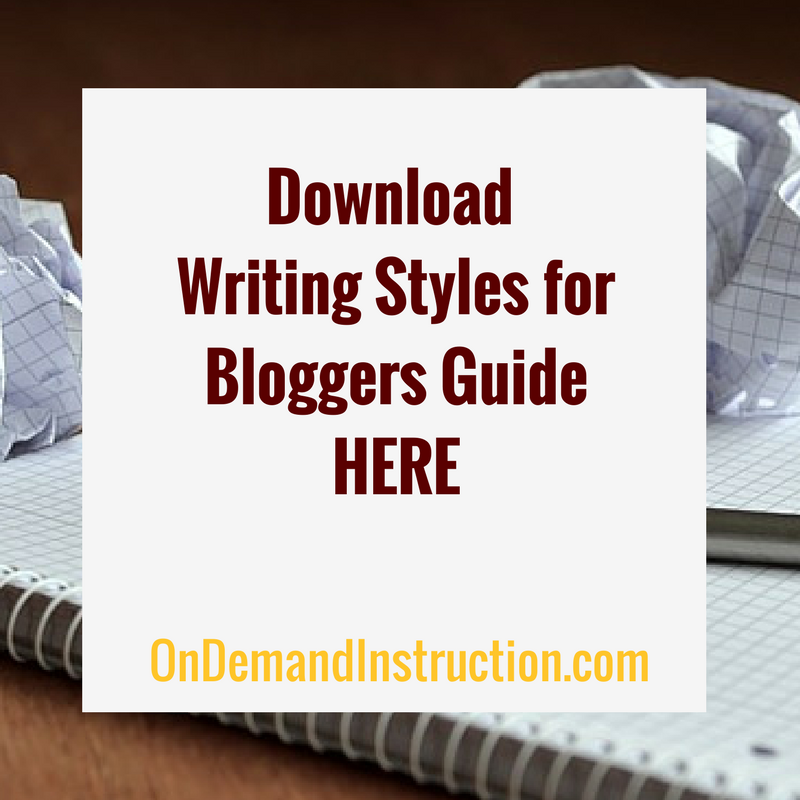Looking for Structure for Your Blog?

Setting up a blog is a matter of popping into a blogging website like Wordpress, Blogger, or Tumblr, choosing a color scheme, and starting on your way. But what do you do when it is time to write the first blog post?
Just about everyone I know blogs. My friend Karina writes for a professional chef’s blog. My writing partner, Christie runs a specialized blog about organizing small business finances. My boss writes a blog about educational leadership. And about half my friends have personal blogs to share stories and pictures of their kids, dogs, and vacation destinations.
One of the magical components of blogging is that it gives us so much latitude to do what we want as we share our stories and expertise. We can create a video, a photograph, multimedia artwork, and written content, and we can share it in any manner that makes sense.
For those people who have an innate knack for organizing content, this allows for an invigorating creative adventure. For those who have not yet worked with organizing content, the prospect can be a bit overwhelming, and that can fire up the inner critic. Sometimes, people worry before they get started.

- What if I mess things up?
- What if my blogs make no sense?
- What if readers hate what I write?
- What if I just confuse people?
Our inner critics can rev into overdrive as we worry ourselves over how to get started into a new blog. What is the answer? Stick to a reliable writing process and your blog posts will achieve your purpose.
So, how does a person start a blog? I am not talking about the website or naming process but rather, how does a person start an individual blog post? How does someone create an individual blog post that will reach out to readers, be interesting, help them, and move the blogosphere forward?
So, how does a person start a blog? I am not talking about the website or naming process but rather, how does a person start an individual blog post? How does someone create an individual blog post that will reach out to readers, be interesting, help them, and move the blogosphere forward?
- Decide on a blog topic and purpose
- Get your ideas organized
- Compose an organized draft
- Edit and revise several times
- Present, publish, and pat yourself on the back
As with all expository writing, strong organization is a major key to good writing. The better that you are at getting organized and staying organized, the higher the quality of your blog posts and overall blog site will be and the more you will enjoy the process of blogging.
So, you need to be organized. How do you do that?
To start, slow down. Many people tend to jump from one idea to the next—from font choices to background design to blog topics to comment responses to social media connections—and on and on. This tends to create a lot of stress and a confused blog. Instead of jumping into 500 ideas all at once, decide on one purpose and one topic for your blog.
So, if you are thinking about blogging about backyard chickens, sewing party decorations, baking gluten free bread, and raising toddlers, this could be a messy blog site. Now, those ideas may all fit within a “raising kids the healthy way” type of message that you can work within, but that is the first key to organization.
So, you need to be organized. How do you do that?
To start, slow down. Many people tend to jump from one idea to the next—from font choices to background design to blog topics to comment responses to social media connections—and on and on. This tends to create a lot of stress and a confused blog. Instead of jumping into 500 ideas all at once, decide on one purpose and one topic for your blog.
So, if you are thinking about blogging about backyard chickens, sewing party decorations, baking gluten free bread, and raising toddlers, this could be a messy blog site. Now, those ideas may all fit within a “raising kids the healthy way” type of message that you can work within, but that is the first key to organization.
1. Decide on a blog topic and purpose
Your blog site as a whole needs to have one topic and one purpose. Take On Demand Instruction as an example.
We support emerging writers. Yes, we do seek to help different types of writers—student writers, creative writers, and bloggers, but we are still getting people started into their writing. What we do not do is include blogs about living in the Rocky Mountains, blogs about surviving graduate school, blogs about what to wear to an interview with a publishing house, or blogs about overcoming depression. We stick to one topic—getting people to write. We have videos, blog posts, books, and courses all designed around getting people to write, supporting writers once they are started, and encouraging writers to stick with it.
Do something similar for your blog. Think about these questions as you organize your blog site and your individual blog posts. Veering away from your topic and purpose creates confusion for you and your readers. Answer these questions about your blog.
We support emerging writers. Yes, we do seek to help different types of writers—student writers, creative writers, and bloggers, but we are still getting people started into their writing. What we do not do is include blogs about living in the Rocky Mountains, blogs about surviving graduate school, blogs about what to wear to an interview with a publishing house, or blogs about overcoming depression. We stick to one topic—getting people to write. We have videos, blog posts, books, and courses all designed around getting people to write, supporting writers once they are started, and encouraging writers to stick with it.
Do something similar for your blog. Think about these questions as you organize your blog site and your individual blog posts. Veering away from your topic and purpose creates confusion for you and your readers. Answer these questions about your blog.
Now that you have a strong topic and purpose for your blog, look at writing that first blog post. Where do we start when we have a topic and purpose but no writing on paper yet? We begin at the beginning of the writing process by brainstorming and planning our writing.
2. Get your ideas organized
OK, so now it is time to write that first blog post. No problem. Use the standard writing process and the post will be organized, clear, and logical. When bloggers use a standard format for blog posts, then readers can anticipate the written structure and follow along with the reasoning more easily, and that consistency gives readers a better reading experience. As writers, we want that.
So, how do we get started? The first step in the idea brainstorm. You want to come up with every idea, topic, question, concern, datum, statistic, interesting quotation, and related thought that you can. A brainstorm should be much larger than what you actually need for the blog post (it is better to throw out extra ideas than end up wanting for filler as you are working through the piece).
Alright, so now you have a gigantic list of topic-related bits and pieces that are just waiting to be organized into a logical pattern, and that is just what you want to do next.
Now, the way that people organize their content tends to be individual. Some people love the traditional outline, others love note cards, some like a Venn diagram, and some prefer 3-column notes. Regardless of what your method of choice is, pick one and use it. Take the information from your brainstorm and put each idea into your graphic organizer until it is filled up nicely.
Your graphic organizer should include a few basic points regardless of which style you prefer: an introduction that includes your thesis, statement of purpose, and problem you are solving. The organizer should also include all of the support (this is the largest portion of your organizer and of your blog post). The support section includes your data and statistics, the explanations and examples, the stories and anecdotes, and all of the intricate details that your readers need to be able to apply the information you are sharing with them.
So, how do we get started? The first step in the idea brainstorm. You want to come up with every idea, topic, question, concern, datum, statistic, interesting quotation, and related thought that you can. A brainstorm should be much larger than what you actually need for the blog post (it is better to throw out extra ideas than end up wanting for filler as you are working through the piece).
Alright, so now you have a gigantic list of topic-related bits and pieces that are just waiting to be organized into a logical pattern, and that is just what you want to do next.
Now, the way that people organize their content tends to be individual. Some people love the traditional outline, others love note cards, some like a Venn diagram, and some prefer 3-column notes. Regardless of what your method of choice is, pick one and use it. Take the information from your brainstorm and put each idea into your graphic organizer until it is filled up nicely.
Your graphic organizer should include a few basic points regardless of which style you prefer: an introduction that includes your thesis, statement of purpose, and problem you are solving. The organizer should also include all of the support (this is the largest portion of your organizer and of your blog post). The support section includes your data and statistics, the explanations and examples, the stories and anecdotes, and all of the intricate details that your readers need to be able to apply the information you are sharing with them.
3. Compose an organized draft
It is time to write. I know it can feel like the writing process takes time where the paragraphs start taking shape on the page, but slowing down the writing process to complete each step is the key to organized blog posts.
So, write out the blog post in the same way that you would an essay, an explanation, or a description. Start at the beginning with an introduction. The introduction tells the reader what the blog post is covering, what problem is being solved, and the general information to support that idea.
With the introduction in place, it is time to add in all of the examples, explanations, details, and data in the support section. The support or body section is the longest portion of the blog post. Give yourself enough time and space to add in all of the pieces that will communicate your purpose to your readers. This is also a fantastic place to insert videos, infographics, photographs, diagrams, podcasts, and other types of content that will help make your point.
And finally, as with every piece of logical, organized writing, wrap it up with a summarizing conclusion. As a blogger, you want to leave your readers with a call to action. If you are unfamiliar with the call to action it is a point in the blog where you try to engage your readers by getting them to do something: click to watch a video, sign up for your newsletter, download a freebie, sign up for a course, or buy a book. You want to leave your readers with a strong understanding of your blog’s topic and also get them so excited that they want to interact with your site.
So, write out the blog post in the same way that you would an essay, an explanation, or a description. Start at the beginning with an introduction. The introduction tells the reader what the blog post is covering, what problem is being solved, and the general information to support that idea.
With the introduction in place, it is time to add in all of the examples, explanations, details, and data in the support section. The support or body section is the longest portion of the blog post. Give yourself enough time and space to add in all of the pieces that will communicate your purpose to your readers. This is also a fantastic place to insert videos, infographics, photographs, diagrams, podcasts, and other types of content that will help make your point.
And finally, as with every piece of logical, organized writing, wrap it up with a summarizing conclusion. As a blogger, you want to leave your readers with a call to action. If you are unfamiliar with the call to action it is a point in the blog where you try to engage your readers by getting them to do something: click to watch a video, sign up for your newsletter, download a freebie, sign up for a course, or buy a book. You want to leave your readers with a strong understanding of your blog’s topic and also get them so excited that they want to interact with your site.
Woo hoo! The first draft is done!
4. Edit and revise several times
OK, so now we move into the polishing work. It is time to edit, revise, and perfect. No one wants to publish a blog posting with grammatical errors, spelling issues, or formatting wonkiness. We all do our best, even when sometimes clicking Publish at 1am means an unexpected error now and then.
Begin the editing process by running a software spelling and grammar check. These never correct all of the issues but will hit some of them. Now that the basics are in order, read the piece aloud. This can make people feel a little odd the first time doing this, but it makes sense once you have tried it. When you read a piece aloud, the errors are much easier to locate and correct than when you read it silently. If you have the opportunity the blog post to another person, the results can be even better.
So, edit out all of the errors. Revise the writing so that the style, voice, and tone all match the blog’s purpose and achieve your intended goals.
Begin the editing process by running a software spelling and grammar check. These never correct all of the issues but will hit some of them. Now that the basics are in order, read the piece aloud. This can make people feel a little odd the first time doing this, but it makes sense once you have tried it. When you read a piece aloud, the errors are much easier to locate and correct than when you read it silently. If you have the opportunity the blog post to another person, the results can be even better.
So, edit out all of the errors. Revise the writing so that the style, voice, and tone all match the blog’s purpose and achieve your intended goals.
5. Present, publish, and pat yourself on the back
Once the blog is error free, it is ready to share with the world. Be sure to verify that the final details are in order: the formatting is correctly set up for your theme, the font matches your website, the headers are in place, the tags have been identified, and the blog is ready to post.
When you share a blog post, you share a little bit about who you are as a person and as a professional with the world. We all try to do our best work, so try and slow down during this final step to ensure that your blog post is exactly what you intended it to be before clicking on the Publish button.
When you share a blog post, you share a little bit about who you are as a person and as a professional with the world. We all try to do our best work, so try and slow down during this final step to ensure that your blog post is exactly what you intended it to be before clicking on the Publish button.
And just like that, your first blog is posted. It should be organized, clear, and on purpose.
Blogging can allow a writer to express both creativity and expertise because of the wonderful tools within blogging sites that allow for originality. If this information got you started and you are ready for more guidance for starting your blog, take a gander through the resources listed below. They just may do the trick for you.
